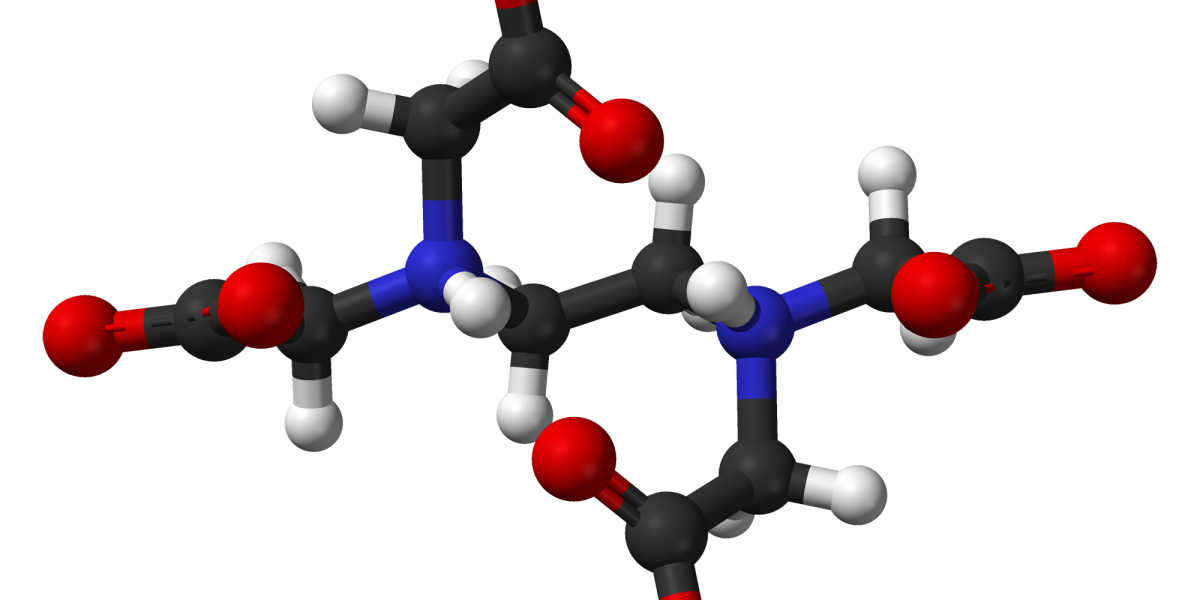Micronutrients constitute only a small portion of a plant’s nutritional requirements but are still vital to growth and development. They are mainly comprised of heavy metals (Fe, Zn, Mn, Cu, Mo) as well as a single non-metal, boron (B). Since they are used in such small concentrations – normally in the 5 to 0.01 ppm range – they are normally put into concentrated nutrient solutions in small proportions and included with other components such as Ca and Mg, which are present in concentrations much more in line with macro nutrients like N, P and K.

The advantage of micro nutrients is that they are available cheaply and in high purities as heavy metal sulfate salts. These however have the problem of leading to relatively unstable cations in solution, making the preparation of concentrated micro nutrient solutions with pure sulfates impractical (unless you want to see how a gallon of rust looks like). However we can chelate the cations as they come out of these sulfates, using a chelating agent, in order to prevent any precipitation issues. In this article I am going to walk you through the preparation of a DIY chelated micronutrient concentrated solution. This is much cheaper than buying the heavy metal chelates, which can be 3+ times more expensive. To prepare this solution you’ll need to buy the chemicals shown in the table below. The table includes links to buy all the different substances mentioned plus their cost (without shipping).
| Link | Price USD/lb | Weight g/gal |
| Disodium EDTA | 22.96 | 17.0600 |
| Ferrous sulfate heptahydrate | 15.99 | 9.4211 |
| Zinc sulfate monohydrate | 9.49 | 0.1039 |
| Manganese sulfate monohydrate | 14.99 | 1.1646 |
| Copper sulfate pentahydrate | 20.99 | 0.0595 |
| Sodium Molybdate | 19.99 | 0.0191 |
| Boric acid | 10.95 | 3.3384 |
| Total Cost | 115.39 |
In order to prepare the solution you also need a scale that can weight with a precision of +/- 0.001g (this is my low cost recommendation) and a container where you can store 1 gallon of solution. Please note that these solutions have to be prepared with distilled water, with RO water you might still run into some issues in the process. To prepare the solution carry out the following steps (the weights to be used are specified in the table above):
- Wash your container thoroughly with a small amount of distilled water
- Fill your container with half its volume of warm distilled water (30C, 86F)
- Weight and add the disodium EDTA, stir until it is completely dissolved (this can take a while).
- Weight and add all the remaining micro nutrients one by one in the order given above, stirring till each one is fully dissolved before adding the next.
- Fill the container to its final volume using warm distilled water.
- Let the solution cool before closing the container.
- For longer half-life transfer to a container that is opaque to UV light.
This solution is prepared to give you the heavy metal concentrations of the Hoagland nutrient solution (a very common set of ratios used in scientific research for growing plants) when used at a ratio of 5mL per every liter of final feeding solution (18.92mL per gallon). The links given above are for 1lb of each product, with this you should be able to prepare at least 53 gallons of the concentrate, which will allow you to prepare 10,600 gallons of final feeding solution. The first salt you will run out of is Fe, but some are used so sparingly that you should be able to use them for the rest of your life without needing to buy any more (like copper sulfate and sodium molybdate). For less than 120 USD you will be able to have enough solution for probably the rest of your life – if you’re a hydroponics aficionado – or even an entire crop cycle if you’re a commercial grower.
This preparation is not without problems though, since the chelates are all prepared in situ they will take a substantial amount of time to reach their thermodynamic equilibrium, meaning that it cannot be used to soon or some of the metals might not be fully chelated. To obtain the full metal chelating effect an excess of around 25% of disodium EDTA is also used, which means that this micro nutrient solution contains more free EDTA than a solution prepared with the chelates. Another issue is that all heavy metals are chelated with EDTA, which might not be optimal depending on your growing conditions. The EDTA chelates are also less stable against UV light and are also more easily attacked by oxidants. Another final issue is that the solution above contains no preservatives and fungi generally like to feast on this sort of micronutrient containing solutions. It is therefore reasonable to avoid preparing any large amounts of the above, as a solution prepared as instructed is normally expected to spoil in 3-4 weeks.
With this in mind, the above is not a perfect but a low cost and practical solution for those who want to start preparing their own nutrient solutions and avoid paying the high prices of some commercial nutrients just because of their micro nutrient contents. The above gives you a versatile micro nutrient concentrate that is bound to be adequate for growing almost all plants.




